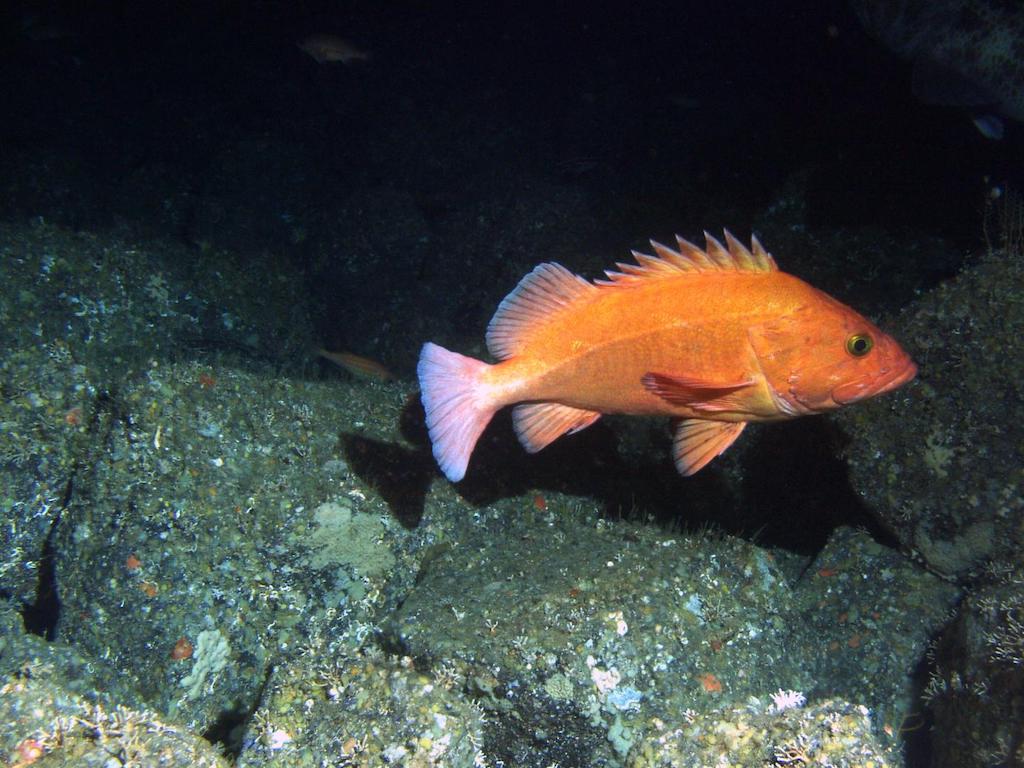In recent years, yelloweye rockfish have been seen as a cautionary tale. Once valuable to commercial, recreational, and Indigenous fishing, their populations were thought to have dropped by more than 70% in the Salish Sea since the 1960s. Managers pointed to overfishing as the primary cause and began imposing progressively stricter catch limits in the 1980s and 1990s. By 2010, when yelloweye rockfish were officially listed as threatened under the Endangered Species Act, fishing was stopped completely.
Although catches have been reduced to near zero, scientists were unsure whether that, combined with other conservation measures, would be enough to spark a recovery. Now a pending five-year federal status review for the species is showing some promising — even surprising — trends.
Markus Min, a graduate student at the University of Washington School of Aquatic and Fishery Sciences, worked with collaborators at the Washington Department of Fish and Wildlife and NOAA Fisheries on the review. Their group pieced together contemporary and historical data on yelloweye rockfish to model its population status from 1930 until today.
Even with limited data available on the species, the group was able to estimate the population trajectory of yelloweye rockfish using a newly developed model that can estimate a range of possible population sizes from the limited data.
The review has not been finalized, but estimates show that the population did likely decline during the 1960s through 1990s, during the period of major fishing efforts, with the model estimating that it was possible that numbers dropped to very low levels by the early 1990s. But beginning in the late 1990s — after fishing limits and bans were enacted — it appears the population has seen “considerable improvement,” according to Min, who presented the findings in April at the online Salish Sea Ecosystem Conference. “It is likely that the population has now recovered to the point where it is at least 40% of the size that it was prior to fishing,” Min said.
While Min cautions that there are wide uncertainties in the model, even its most conservative estimate is higher than the 2010 federal findings that showed a population sitting below 30%.
NOAA Rockfish Recovery Coordinator Dayv Lowry who also worked on the review, says the strength of the trend is surprising because rockfish aren’t like other fish, such as herring or even salmon, that produce large numbers of offspring in just a few years.
“Yelloweye rockfish don’t even become sexually mature until they are in their 20s,” Lowry says. That means it takes time for them to recruit the next generation. In that sense they are less like a lot of other fish and more like humans, where an increase of even 10% would be “huge,” according to Lowry. “Imagine a human population increasing so rapidly over just 25 years. It would be as if everyone in the Seattle area had three times as many babies.”
“If this is real — and this is based on the most robust model we have with the best available science — then we are very optimistic,” says Lowry.
A paper describing the results of the Puget Sound study is expected to be submitted for peer review within the year, the scientists say.
While the federal status review focuses on yelloweye rockfish in Puget Sound, the positive population trends also appear to be holding up on the Canadian side of the border where the bulk of the region's rockfish population occurs. A recently completed Department of Fisheries and Oceans Canada analysis of yelloweye rockfish in the Strait of Georgia reports that population abundance for the fish “is near sustainable levels, and long-term projections are stable,” although it warns against continuing threats from habitat loss and climate change.
Neither the Canadian nor the U.S. reviews address another federally listed rockfish, the bocaccio, which is classified as endangered. Ongoing conservation efforts in Puget Sound for both the bocaccio and yelloweye rockfish are outlined in a comprehensive recovery plan from NOAA's National Marine Fisheries Service.
Jeff Rice contributed to this report.


